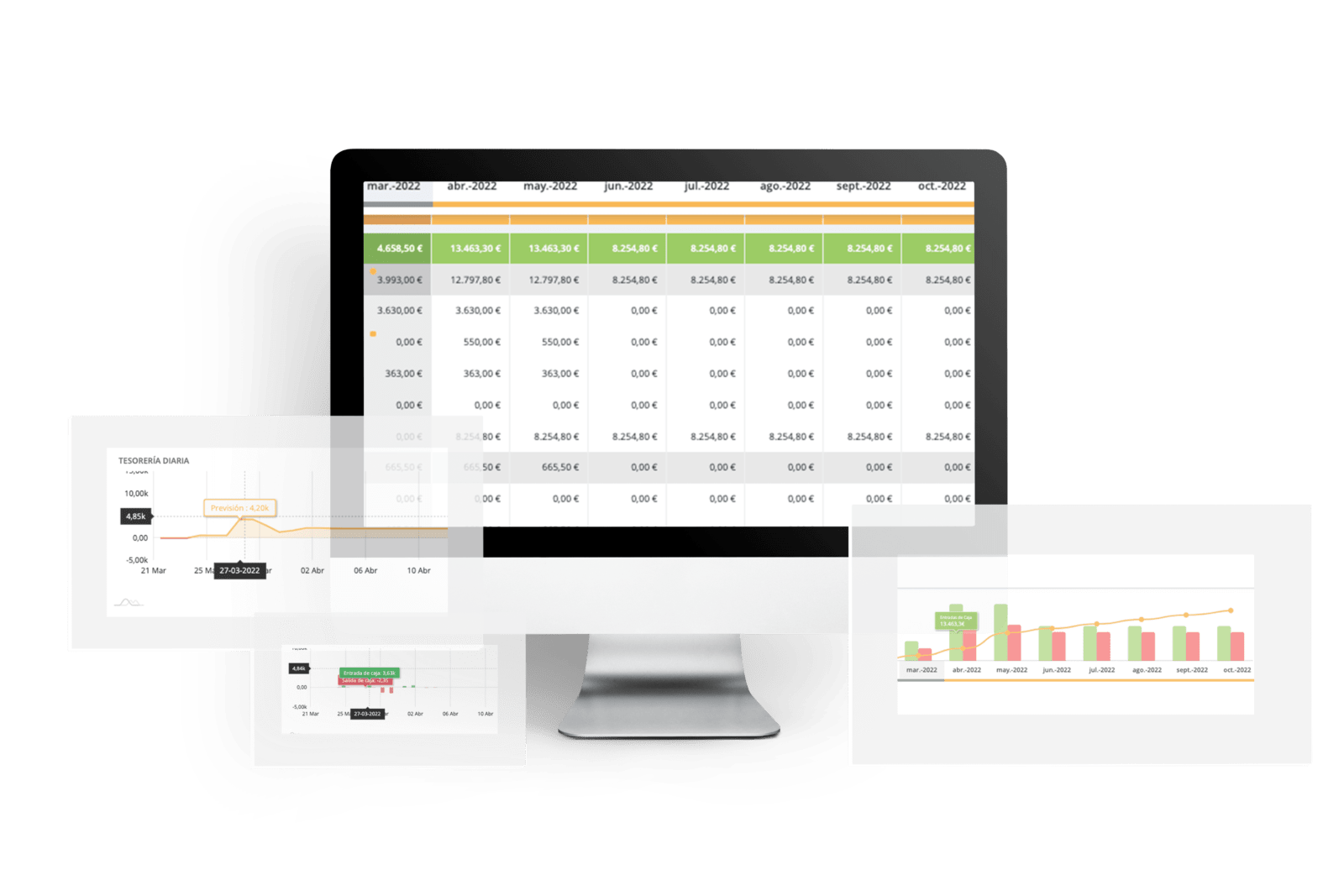Okay, you need financing. But there are a multitude of options out there, and the best choice will depend on your business situation. In this post we will focus on the most common banking products and in which situations each one is usually used. In this article we tell you in detail all the types of bank financing for small and medium-sized companies.
First of all, do you know exactly how much financing you will need? And when? If you are not sure, we recommend you to visit this link.
Types of bank financing for small and medium-sized companies
Traditional loans
This is a fixed amount provided by the bank at an annual interest rate and for a fixed term.
When you are granted a loan, a number of conditions are agreed upon, such as the total amount borrowed, the interest rate, and the repayment term. All three together return the monthly payment you will have to make.
Loan repayment terms typically range from 18 months to 5 years, while interest rates will vary primarily based on the credit history of the business.
As a general rule, a longer repayment term may allow you to negotiate a lower interest rate, but keep in mind that you will probably end up paying more in total as you will be paying interest for a longer period of time.
Keys to loans:
- You get a cash injection directly into your bank account.
- Timing: a loan application can be granted quickly (in about 10-15 days).
- Flexibility: you can use the money for different types of expenses, although you will have to justify it beforehand with a business forecast.
- Cost: loans can end up being quite expensive, even more so when the business does not have a credit history that gives the bank confidence, which translates into higher interest rates.
- Interest on the total amount borrowed: you will generally pay interest on the total amount borrowed regardless of what you end up using, although you can advance the agreed payments to save interest (beware, you will generally have an early cancellation fee, although it will always be less than the interest you have left to pay).
Generally used for:
- Purchase of assets
- Growth and expansion
Other aspects to consider:
- APR: in short, it is the annual cost of borrowing money, including commissions, interest rate and additional links, if any.
- Grace period: this is not common, but sometimes it is possible to negotiate that the first payment be made a few months after the loan is granted. This is more common in ENISA-type financing and other publicly funded options.
- Interest for early cancellation: very clear, if you decide to pay all the outstanding amount at once, the bank may charge you a percentage of the cancelled amount in case you are paying in advance of the agreed payments, since in that case you would save the interest rate of the advanced amount.
- Amount: the amount you will be lent. If you need to be sure how much to order so that you don’t incur unnecessary expenses but don’t fall short, visit this link.
- Study fee: the bank may charge you a fee for studying your case.
- Opening commission
Lines of credit
The lines basically serve to have money for the day-to-day running of the business. It is a “flexible” loan where a maximum amount of money is defined, which you will be able to use when you need it, just like a credit card, and which you will pay immediately or within a specific maximum period, in the same way that the amount you borrow is variable depending on what you need, the bank will charge interest tied to the amount available at each moment, so that the more money you have available and for a longer period of time, the higher the interest to be paid.
Unlike a credit card, the amount you can borrow on a line of credit is usually significantly higher, and sometimes collateral may be required.
Keys to credit lines:
- Generally, you will only need a 1-year history of the business.
- Cost: you will only pay for the amount drawn, although sometimes the bank will charge if you do not have any amount available within a certain period of time
- Interest: generally the interest rate of a line will be higher than that of a traditional loan.
- Term: a 12-month contract term is usually fixed.
Generally used for:
- Management of one-time cash flow tensions (do you know when you may have one-time cash flow problems? Take a look here.
- Purchase of stock
- Recruitment of personnel
Types of bank financing for small and medium-sized companies
Factoring or invoice financing
One of the main headaches for many businesses is medium to long term overdue invoices, such as invoices issued after 30 days, 60 days, 90 days, or even more; a real problem in the cash flow of businesses.
If your business issues invoices with these payment terms, you may have the option of borrowing the value of those invoices to avoid having to wait for fabrics to pay.
Factoring is basically a process in which a third party (usually a bank or financial institution) “buys” your outstanding invoices at an agreed cost. This will generally be done in b2b business, and not so much in b2c business.
This system has two different forms of financing:
- Advance or invoice financing: the financial entity advances you the amount of the invoice at a specific interest rate on the total amount. It is basically financing against the invoice value, and can be arranged on a confidential basis so that your customer is not aware of it.
In this case, you are still responsible for claiming the invoice from your customer to collect it. - Factoring: in this case, all the management of the invoice collection is handled by the finance company, which manages the collection of the invoice. In this case, obviously, your customer will know that you are using this instrument.
In a few days, the finance company will advance you a percentage of the value of the invoice, and will later collect the rest, which they will pay you once they have collected it, taking off the interest they charge you.
Keys to factoring or invoice financing:
- You obtain immediate liquidity
- You will generally have less difficulty obtaining it than a loan or line of credit.
- For factoring, you won’t have to chase your customer to get paid, but your customers will know you are using it, and it may change their perception of your business.
- Generally, it will not help you to finance your growth plans.
Generally used for:
- One-time cash shortfalls or cash strains
Credit cards
It is very common to know the operation of a credit card for personal use. However, it is useful to know how they work in the case of companies in order to know when to use them and get the most out of them.
A business credit card will have a limit that will generally be set based on the company’s turnover, so you can probably get a significantly higher limit on a credit card through your business.
A key to good credit card management is to use your credit card frequently to build a good credit score, as long as you avoid making late payments.
You can apply for more than one credit card, but keep in mind that if you have multiple credit cards, they will count as financing granted to the company, increasing the risk related to the company when applying for additional financing.
Credit card keys:
- You get immediate access to more liquidity
- You can build a good credit history
- You can tie several credit cards of different people in your team to a single account.
- Interest rates and related costs are usually quite high.
Generally used for:
- Buy equipment or stock
- Overhead
- Payment of invoices
Do you know how much funding you will need and when? Anticipate surprises with a good cash flow forecast.





